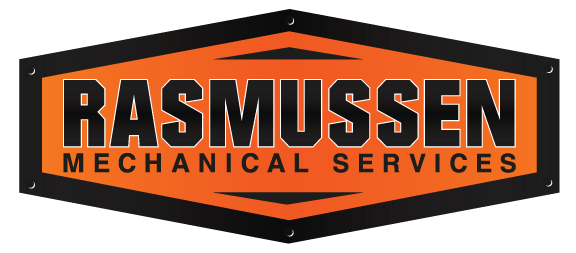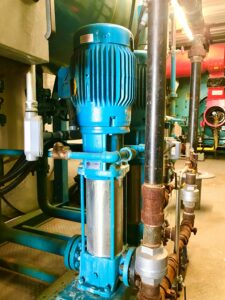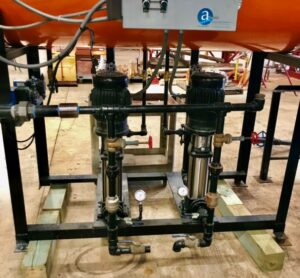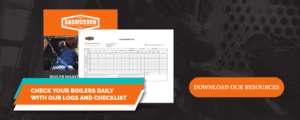Boiler feed water pumps are essential for steam generation in various industrial processes. Boiler feed pumps provide the boiler with the appropriate amount of water needed to maintain safe operation. The water being pumped into the system may be feedwater, condensate returns or a combination of the two depending on the system. Boiler feed pumps are generally multistage pumps. These pumps must generate sufficient pressure to overcome the steam pressure generated by the boiler. To do this, they use multiple impellers with bearings on the end of each shaft to overcome boiler pressure. Multistage pumps often feature individual casings that are clamped together axially to ensure proper sealing and performance under varying temperature and pressure conditions.
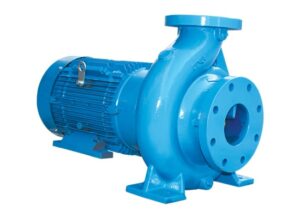
Horizontal Boiler Feed Pump – Picture Courtesy of Pro Pump
Horizontal Pumps
These pumps tend to be easier to install and maintain than their vertical counterparts. This is largely due to the fact that their internal parts are easier to access. The average discharge pressure of horizontal pumps has increased significantly over the years, reflecting advancements in pump technology and design. While this is a major benefit, the horizontal positioning also takes up more floor space in a boiler room. These pumps can typically handle up to 1500 PSIG, which is slightly lower than vertical pumps’ discharge pressures.
Vertical Pumps
These pumps take up less floor space but require more vertical space. As mentioned above these can handle higher pressures (and temperatures) than the horizontal pumps. Due to there design, these pumps also are much harder to maintain.
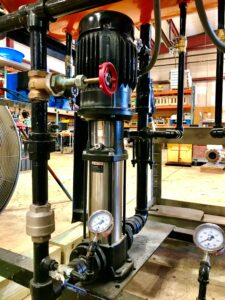
Vertical Multi-Stage Boiler Feed Pump
On/Off vs Modulating Continuous Feed Pumps
Boiler feed pumps can operate using two distinct methods: on/off control and modulating continuous control .
- On/Off Pumps: These pumps operate by switching on when the boiler’s water level drops, which is detected by a low-water cutoff float. While simple and cost-effective, these systems can create problems. One such problem is thermal shock due to large temperature differences between the boiler water and the incoming feedwater. This can cause damage to surrounding metal components. The frequent cycling of these pumps also leads to more wear and tear.
- Modulating Continuous Pumps: By using more advanced controls, modulating pumps adjust the feedwater flow based on the boiler’s steam rate. This ensures more consistent water levels, reducing the risk of thermal shock and minimizing mechanical stress on the pump. Though they come at a higher installation cost, modulating continuous pumps improve long-term reliability and energy efficiency.
Another term you may hear thrown around is a full-load feed pump. A “full-load” feed pump is a boiler feedwater pump sized to cover the boiler’s maximum steaming rate. It runs at a fixed speed and delivers essentially one flow—enough for 100 % load—so the level controller just turns the pump on and off (or opens a recirc line) rather than modulating pump speed. Simple and cheap up front, but it wastes energy whenever the boiler is below full fire and can put more start/stop stress on the pump.
Like this article? Check out our recommendations for Centrifugal Pump Maintenance here.
Feedwater And Pumps
Feed pumps are designed to handle the high temperature requirements of the boiler systems. Water turns to steam at 212 degrees Fahrenheit at atmospheric pressure. However, by pressurizing the deaerator, water will stay in its liquid form at higher temperatures. This means some pumps are designed to handle temperatures from 225 to 350 degrees Fahrenheit.
Pumps are commonly stainless steel or ductile iron. Depending on the chemical additives in the water, you may want to choose one over the other. If the wrong material is in use, it can cause corrosion on pump components over time.
Pressure Requirements
Use the list below from an article written by Industrial Steam of pressure drops to consider when calculating discharge head for a pump:
“The Total Pump Discharge Pressure must overcome the following:
System Pressure – The pressure required by the steam distribution system.
Non-Return Valve Loss – how much drop occurs across the non-return valve? The boiler must operate at a pressure high enough to overcome this and satisfy the system pressure requirements.
Economizer – The pressure drop across the waterside of the economizer.
Super Heater – The pressure drop across the waterside of the super heater.
Modulating Level Control Valve – The pressure drop across the level control valve. (not required with on-off pump control)
Feed Stop & Check Loss – Drop across the feedwater stop and check valves (if used).
Piping Loss to Boiler Height to boiler water level – The drum may be substantially higher than the boiler feedwater pumps. The pumps must be able to lift the water up to the drum level.
Total Discharge Pressure –The sum of all pressure drops the feed pump must satisfy. After the total pressure drop is calculated, it must be converted to feet of discharge head in order to select the pump. The correction factor of 2.31 converts PSIG to feet of head. We correct for the density of boiling water (227 degrees F) by dividing the head by .96.
TDH = total discharge pressure (PSIG) x 2.31 .96″
Choosing The Right Pump
Choosing the Right Boiler Feed Pump
When selecting a boiler feed pump, several key factors should be considered:
- Pressure Requirements: Ensure the pump can generate enough pressure to overcome the boiler’s internal pressure.
- NPSH Requirements: Meet the Net Positive Suction Head (NPSH) to avoid pump cavitation, which occurs when the pump’s pressure is too low. Cavitation causes the formation of vapor bubbles, which implode and can lead to pump vibration, mechanical damage, and potentially catastrophic pump failure.
- Pump Configuration: Decide whether a horizontal or vertical pump is more suitable based on available space and pressure needs.
- Modulating vs On/Off Control: Evaluate whether a modulating continuous pump or a simpler on/off system is appropriate for your application.
Boiler Feed Pump Redundancy
It is essential that a boiler has the water it needs to continue operating effectively. Decrease flow, and you will have a low water condition. Increase flow, and you end up with carryover. Due to this fact, most systems will have redundancy built in. As a boiler operator, it is imperative that you switch back and forth between these pumps on a regular basis. This helps ensure pumps don’t lock up from slitting idle for too long. It also will help you spot an issue before it is an emergency situation.
Maintenance Requirements for Boiler Feed Pumps
Proper maintenance of boiler feed pumps is relatively simple but crucial for extending pump life and avoiding costly downtime. Regular tasks include:
- Bearing Lubrication: Ensuring bearings are properly lubricated to reduce friction and wear.
- Seal Replacement: Inspecting and replacing seals as necessary to prevent leaks.
- Float Level Control: Checking the float level controls to ensure they are functioning properly.
- Leak Detection: Periodically inspecting piping for leaks, which could indicate corrosion or other system issues.
Boiler feed pumps should undergo routine inspections at least once every six months.Unusual vibrations, increased noise levels, erratic pressure fluctuations, and reduced flow rates indicate that boiler feed water pumps may be experiencing problems. Excessive vibration can stem from misaligned components, imbalanced impellers, or worn-out bearings.Overheating can result from insufficient lubrication, excessive friction, or blocked cooling systems. Finally, balancing pump rotor radial forces is crucial. These forces are influenced by factors such as the weight of the rotor, mechanical unbalance, and hydraulic thrust.
By staying on top of routine maintenance, you can extend the life of your boiler feed pumps and avoid unexpected failures.
Why Boiler Feed Pumps Are Important for Boiler Operation
A boiler feed pump is essential for keeping a boiler running safely and efficiently. In conventional power stations, specific boiler feed pump designs are crucial to meet the performance requirements of larger units. Without it, the boiler can’t keep the right water levels, which can cause shutdowns or even damage. The pump sends water into the boiler at the right pressure to balance the steam pressure. It also helps the system run smoothly, preventing problems like sudden temperature changes, pump damage, and wear and tear. Choosing the right load feed pumps, especially those designed for operation in high-pressure environments, is key to reducing downtime, extending the life of the equipment, and keeping the boiler working properly.
Other Common Terms To Know
Ring-section pump: This is basically a tall stack of metal “rings,” each with its own impeller. Long tie-rods clamp the rings together and thin gaskets seal the joints so water steps up in pressure stage by stage. This stacked design packs high pressure into a slim, easy-to-service pump that’s popular for boiler feed and other demanding jobs. Labyrinth seals are effective in preventing leakage and dealing with high operational pressures, making them a reliable choice among mechanical seals and floating ring seals.
Full-load feed pump: A “full-load” feed pump is a boiler feedwater pump sized to cover the boiler’s maximum steaming rate. It runs at a fixed speed and delivers essentially one flow—enough for 100 % load. So the level controller just turns the pump on and off (or opens a recirc line) rather than modulating pump speed. Simple and cheap up front, but it wastes energy whenever the boiler is below full fire. It can also put more start/stop stress on the pump.
Condensate return pump – A boiler feed pump must raise deaerated water to a pressure higher than the boiler’s steam header, while a condensate return pump only lifts cooled condensate back to the deaerator at low pressure. Because feed pumps handle hotter water and far greater head, they use multistage designs, balance drums, and mechanical seals rated for hundreds of psi; condensate pumps, by contrast, are typically single-stage, fitted with simple packing or lip seals, and focus on flow volume rather than pressure.
Design Considerations
When designing a boiler-feed pump, several factors must be considered to ensure optimal performance and reliability. The type of pump—whether horizontal or vertical—should be chosen not only for available space and pressure requirements but also for net positive suction head (NPSH): a vertical canned pump can sit lower and gain static head, shielding hot feedwater from cavitation, whereas a horizontal unit offers easier seal access when floor space allows.
Materials and construction are also critical; stainless steel or ductile iron generally suffice up to about 300 psi (20 bar), but once pressures climb toward 600 psi (42 bar) and above, engineers turn to higher-strength alloys such as 11–13 % chrome or duplex stainless steel to handle the elevated stress and corrosion potential. Operating conditions such as flow rate, pressure, and temperature must be carefully evaluated, and the pump should be sized for the boiler’s maximum demand with roughly a 10 % margin so it never runs on the ragged edge.
The pump’s rotor construction is another vital aspect, as it must balance axial and radial forces to prevent excessive wear and ensure smooth operation. Proper balancing devices, such as balance discs or drums, cancel most of the axial load so that the thrust bearing carries only the small residual force, extending bearing life. Additionally, the shaft seals must be designed to prevent leaks and withstand high pressures; cartridge mechanical seals are a common choice, but at ultra-high pressures—around 2 200 psi (150 bar)—designers may still opt for hydrodynamic labyrinths or segmented carbon-ring throttling seals where mechanical options become impractically large. By considering these factors, you can ensure that your boiler-feed pump operates efficiently and reliably under various operating conditions.
Installation and Regulation
Proper installation and regulation of boiler-feed pumps are essential for their efficient and reliable operation. During installation, it is crucial to grout the base, laser-align the driver and pump, and secure the piping so no external loads distort the casing, thereby preventing vibrations and mechanical stresses. The use of appropriate regulation devices, such as automatic minimum-flow valves and pressure control systems, helps maintain the desired flow rate and pressure. The bypass line should return to the deaerator or condensate tank—not back to the suction flange—to avoid thermal shock and recycle of hot water. This prevents issues like cavitation and thermal shock.
